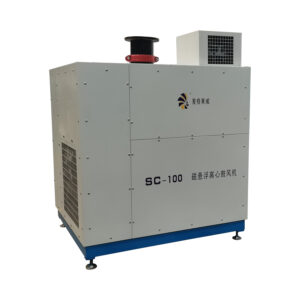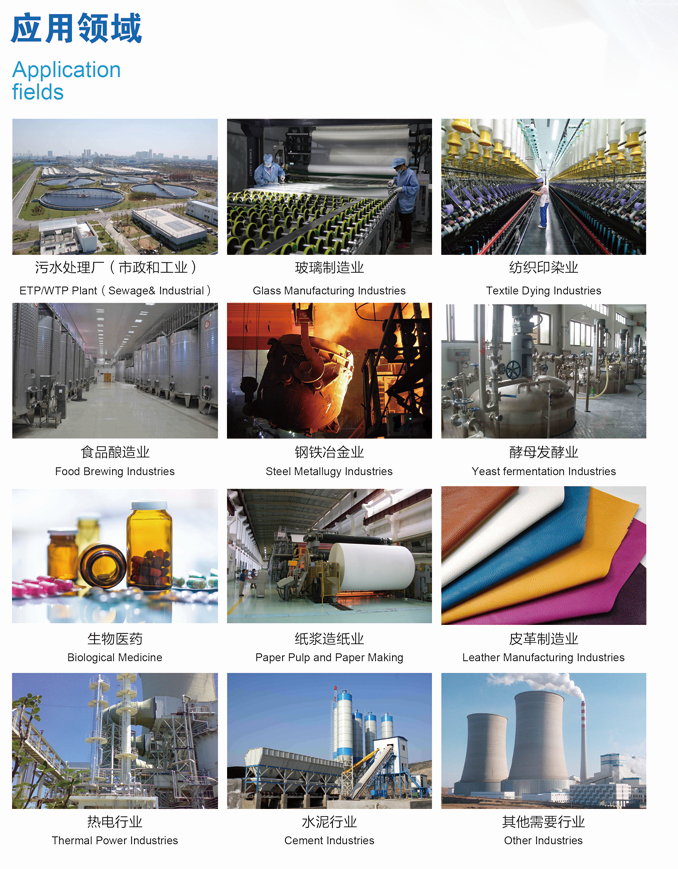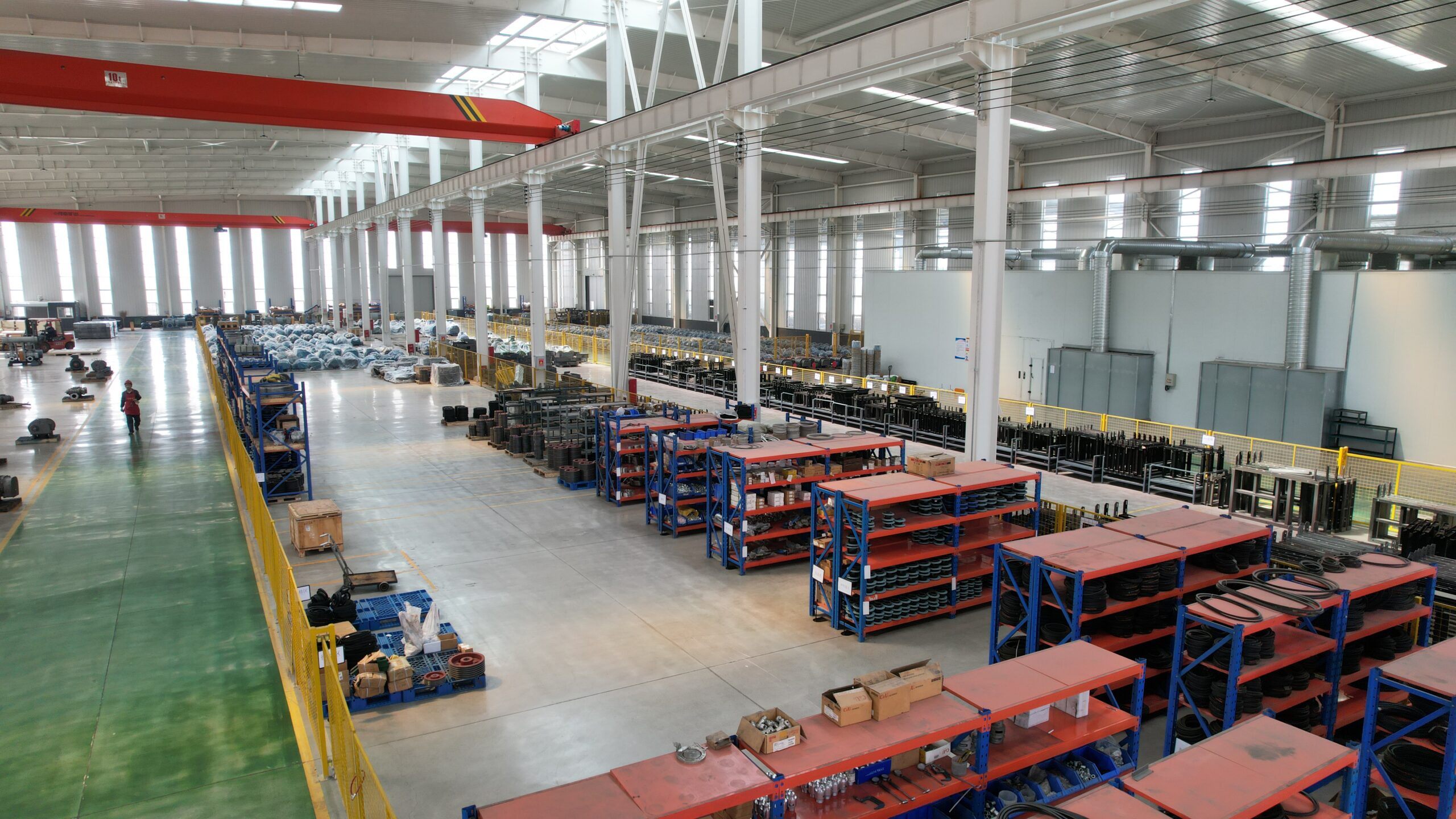Bróga Glev Turbo SlowerAn cineál séidire turbo ceart a roghnú (séidire turbo tobhach maighnéadach nó séidire fréamhacha traidisiúnta) Éilíonn sé breithniú cuimsitheach ar ilfhachtóirí. Seo roinnt príomhphointí:
Riachtanais Feidhmíochta
Sreabhadh agus brú: Roghnaigh de réir an tsreafa gáis agus an bhrú a theastaíonn don chás iarratais iarbhír. Tagann séidirí turbo traidisiúnta i réimse cineálacha agus sonraíochtaí chun raon leathan sreafa agus brú a chomhlíonadh, Ach i gcás brú ard agus sreabhadh mór, D’fhéadfadh go mbeadh ar il -aonaid oibriú i dteannta a chéile. Tá buntáistí éifeachtúlachta agus feidhmíochta níos airde ag séidirí turbo maighnéadaigh sa mheán -sreabhadh agus sa raon brú, agus is féidir leis riachtanais shonracha sreafa agus brú a chomhlíonadh níos cruinne. Mar shampla, i gcóras aeraithe ionad cóireála séarachais, Má tá toirt mór aeraithe agus brú aeraithe áirithe ag teastáil, Is féidir na luachanna sonracha a roghnú. Má tá na riachtanais sreafa agus brú réasúnta íseal agus mura bhfuil an raon éagsúlachta mór, B’fhéidir gur rogha níos fearr iad séidirí turbo maighnéadach maighnéadach; Má tá na riachtanais sreafa agus brú ard agus má tá an raon éagsúlachta mór, D’fhéadfadh sé go mbeadh séidirí turbo traidisiúnta níos oiriúnaí, nó is féidir meascán de shéideoirí turbo tobhaigh maighnéadaigh agus séidirí traidisiúnta turbo a bhreithniú.
Éifeachtúlacht: Maidir le cásanna a bhfuil riachtanais ardéifeachtúlachta acu, Is rogha níos fearr iad séidirí turbo tobhach maighnéadach. Mar shampla, I roinnt próiseas táirgthe tionsclaíoch le srianta dochta ar thomhaltas fuinnimh, Is féidir le héifeachtúlacht ard na séidirí turbo maighnéadach maighnéadach costais ídithe fuinnimh a laghdú go mór. Is féidir a éifeachtúlacht faoi roinnt dálaí oibre a bheith 10% – 20% níos airde ná an séidirí turbo traidisiúnta. Cén dóigh faoin spéir a ...?, Mura dteastaíonn éifeachtúlacht ard an -ard ó chás an iarratais agus má tá an buiséad teoranta, Is féidir le séidirí turbo traidisiúnta freastal ar riachtanais bhunúsacha freisin.

Timpeallacht oibriúcháin
Teocht agus taise: I dtimpeallachtaí ardteochta, Tá na codanna meicniúla de séidirí turbo traidisiúnta i mbaol leathnú teirmeach agus fadhbanna bealaithe, a théann i bhfeidhm ar a bhfeidhmíocht agus a saol. I dtimpeallachtaí tais, Tá meirg agus creimeadh i gcodanna miotail na séidirí turbo traidisiúnta, agus tá gá le cóireáil frith-chreimthe; Ní mór do na comhpháirteanna leictreonacha de shéideoirí turbo maighnéadaigh a bheith ag cruthú taise chun ciorcaid ghearra agus lochtanna eile a chosc. Mar shampla, I roinnt ceardlanna ceimiceacha, Tá an taise comhthimpeallach ard agus d'fhéadfadh gáis creimneach a bheith ann. Cibé an séidire turbo traidisiúnta é nó sé séidire turbo tobhach maighnéadach, Is gá samhail a roghnú le sciath frith-chreimthe nó ábhar agus bearta cosanta comhfhreagracha a ghlacadh.

Teorannú spáis: Tá struchtúr dlúth agus lorg beag ag séidirí turbo maighnéadach maighnéadach, is buntáiste tábhachtach é seo d'áiteanna le spás teoranta, mar shampla roinnt saotharlanna beaga agus seomraí trealaimh. Is iondúil go mbíonn séidire turbo traidisiúnta mór i méid, Go háirithe séidirí turbo lártheifeacha móra nó séidirí turbo sreafa aiseach, a éilíonn spás suiteála agus bealaí cothabhála móra.
Costas cothabhála
Timthriall cothabhála: Úsáideann séidirí turbo maighnéadach imthacaí maighnéadacha imthacaí maighnéadacha imthacaí, níl aon chaitheamh mheicniúil agat, agus timthriall cothabhála fada a bheith agat. Na himthacaí meicniúla, Caithfear criosanna agus comhpháirteanna eile de séidirí turbo traidisiúnta a iniúchadh agus a athsholáthar go rialta, agus tá an timthriall cothabhála gearr. Go ginearálta, Teastaíonn cothabháil gach cúpla mí.
Deacracht chothabhála: Tá cothabháil séidirí turbo tobhach maighnéadach sách simplí, ag díriú go príomha ar iniúchadh agus cothabháil na gcóras rialaithe leictreonaigh agus na gcóras fuaraithe, Ach tá an leibhéal teicniúil pearsanra cothabhála sách ard. Má tá taithí shaibhir ag pearsanra cothabhála inmheánach an fhiontair i gcothabháil séidirí traidisiúnta turbo, Ach níl an máistreacht theicniúil ar shéideoirí turbo tobhach maighnéadach, Ba cheart an fachtóir seo a bhreithniú freisin agus é ag roghnú.
Costais infheistíochta tosaigh agus oibriúcháin
Infheistíocht tosaigh: Tá praghas na séidirí turbo tobhach maighnéadach sách ard, agus mar thoradh ar a ardteicneolaíocht agus a bpróiseas monaraíochta beacht tá costais arda. Tá séidirí turbo traidisiúnta réasúnta íseal i bpraghas, le réimse leathan roghanna agus roghnaíocht láidir, ar féidir leis freastal ar riachtanais na mbuiséad éagsúil. Má tá buiséad an tionscadail teoranta, Féadfaidh tú claonadh a roghnú séidirí turbo traidisiúnta
Costais oibriúcháin: Cé go bhfuil ardinfheistíocht na séidirí turbo tobhach maighnéadach ard, Mar gheall ar a n -ardéifeachtúlacht agus a gcoigilt fuinnimh, Is féidir leo a lán billí leictreachais a shábháil in oibriú fadtéarmach agus costais oibriúcháin ísle a bheith acu. Tá tomhaltas ardfhuinnimh ag séidirí turbo traidisiúnta, go háirithe i gcás oibriú fadtéarmach, Tá an costas leictreachais suntasach. Mar sin, do thionscadail fhadtéarmacha, is gá machnamh cuimsitheach a dhéanamh ar na costais infheistíochta tosaigh agus oibriúcháin, agus a chinneadh cén séidire turbo atá níos eacnamaíche trí anailís ar chostas saolré.
Cásanna iarratais
Cóireáil séarachais: I ngléasraí cóireála séarachais, Ní mór don chóras aeraithe an méid aeraithe a choigeartú i bhfíor -am de réir tosca mar cháilíocht an uisce agus toirt uisce séarachais. Feidhmíocht na rialachán luais beacht agus tréithe ardéifeachtúlachta agus coigilte fuinnimh a bhaineann le séidirí turbo tobhach maighnéadach a dhéanamh an -oiriúnach don nasc aeraithe cóireála séarachais, is féidir leis aerú beacht a bhaint amach, costais tomhaltais fuinnimh agus oibriúcháin a laghdú. Cén dóigh faoin spéir a ...?, I roinnt gléasraí cóireála séarachais beaga, Má tá an buiséad teoranta agus mura bhfuil na riachtanais cruinnis aeraithe ard, Is féidir le séidirí turbo traidisiúnta freastal ar riachtanais bhunúsacha freisin.

Iompar neomatach: I gcórais iompair neomatic, Is gá séidirí turbo oiriúnacha a roghnú de réir tréithe na n -ábhar iompair, fad a iompar agus toirt a iompar. Agus roinnt ábhar breá agus luachmhar á chur in iúl, D'fhéadfadh sé go mbeadh níos mó tóir ar shéideoirí turbo maighnéadach mar gheall ar a n -oibriú seasmhach agus gan aon truailliú neamhíonachta. Cén dóigh faoin spéir a ...?, chun roinnt cáithníní móra agus ábhair an -scríobach a chur in iúl, Mar gheall ar an struchtúr soladach agus ar fhriotaíocht na séidirí turbo traidisiúnta a chaitheamh, is féidir iad a chur in oiriúint do dhálaí oibre.

Mar achoimre, Éilíonn roghnú an chineáil séidire turbo cuí breithniú cuimsitheach ar ilfhachtóirí amhail riachtanais feidhmíochta, timpeallacht oibriúcháin, Costais chothabhála, costais infheistíochta tosaigh agus oibriúcháin, agus cásanna sonracha iarratais, agus na buntáistí agus na míbhuntáistí a bhaineann le fachtóirí éagsúla a mheá chun an cineál séidire turbo is fearr a oireann do riachtanais shonracha iarratais a chinneadh. https://Cnrootsblower.com

